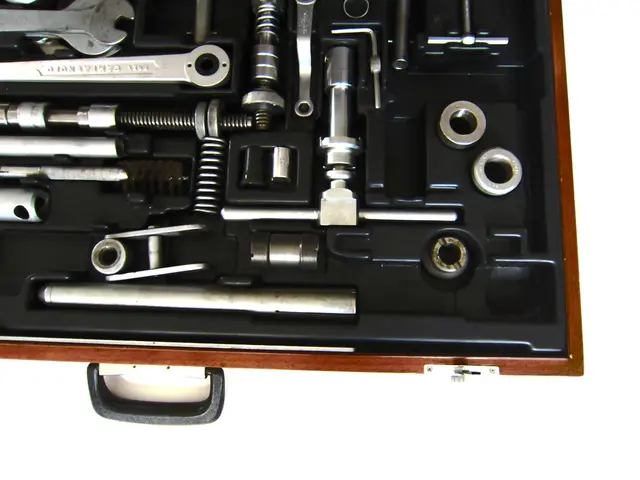NASA investigates tiltwing technology for improved safety in future aircraft designs
In the realm of aviation innovation, NASA's research into advanced air mobility (AAM) is making significant strides. The Revolutionary Vertical Lift Technology project, under NASA's Advanced Air Vehicles Program, is at the forefront of this mission.
Recently, Archer Aviation's Midnight aircraft completed its longest piloted flight to date, covering approximately 55 miles in 31 minutes at speeds over 126 mph. This milestone, announced on August 19, 2025, marks a significant leap in the development of electric air taxis.
Meanwhile, NASA is also researching a specialized model wing to support the development of AAM aircraft. This wing, a scaled-down version of one used in tiltwing aircraft, can rotate its wing and rotors between vertical and horizontal positions. The wing is outfitted with over 700 sensors designed to measure pressure distribution and other data from the wing and propeller interactions.
The tiltwing test provides a unique database to validate the next generation of design tools for use by the broader AAM community. By understanding how multiple propellers and the wing interact under various speeds and conditions, NASA aims to deliver data that guides the industry's development of electric air taxis and drones.
The wing is mounted on special sensors to measure the forces applied to the model. Sensors in each motor-propeller hub are also used to measure the forces acting on the components independently. This collected data is relevant to cruise, hover, and transition conditions for AAM aircraft.
NASA's Langley Research Center and Embry-Riddle Aeronautical University have formed a partnership to advance research, educational opportunities, and workforce development in this field. The team has been testing the model in NASA's 14-by-22-Foot Subsonic Wind Tunnel at Langley, collecting data at different wing tilt angles, flap positions, and rotation rates while varying the tunnel wind speed and adjusting the relative positions of the propellers.
Elsewhere in the aviation industry, GKN Aerospace has earned a gold rating in EcoVadis sustainability rating, and Bodycote has announced a significant milestone in its sustainability agenda, highlighting both the feasibility of 2030 decarbonisation targets and customer demand for greener practices.
In addition, Lockheed Martin will upgrade the Republic of Korea Air Force's F-16 Block 52 flight simulators to mirror the advanced capabilities of its modernised F-16 Viper (F-16V) aircraft. Brookhouse Aerospace has also invested over £500,000 in additional machinery to extend its engineering capabilities.
Lastly, NCC has adopted Dassault Systèmes' 3DEXPERIENCE platform on the cloud and extended its use to other innovation centres within the UK High Value Manufacturing Catapult network. Once analyzed, the information gathered from NASA's tiltwing test will be released to industry on NASA's website, accelerating future design cycles and enabling informed decisions about aerodynamic and acoustic performance.
These developments underscore the exciting progress being made in the field of advanced air mobility, with NASA's research playing a crucial role in shaping the future of urban air transportation.
Read also:
- Goodyear in 2025: Advancement in Total Mobility through the Launch of Kmax Gen-3 by Goodyear
- Electric SUV Showdown: Vinfast VF6 or MG Windsor EV - Your Choice Revealed
- United States Secures $632 Million to Fuel Electric Vehicle Revolution
- IM Motors reveals extended-range powertrain akin to installing an internal combustion engine in a Tesla Model Y







